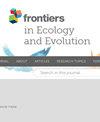Seasonal variation in preference for green roof vegetation
IF 2.4
3区 环境科学与生态学
Q2 ECOLOGY
引用次数: 0
Abstract
Green roofs are vegetation systems that are particularly well-suited to dense urban environments, and can contribute multiple ecosystem services that support biodiversity, human health, and well-being. Several health benefits are dependent on the way that people perceive the characteristics of the vegetation on the green roof, that is, their environmental appraisal. In this study we set out to explore the effects of different types of green roof vegetation, along with seasonal and successional variations, on visual aesthetical experiences, as well as perceived biodiversity. An online photo elicitation survey was conducted using standardised photographs of a selection of green roofs in Malmö, Sweden, during three different seasons. In the survey, members of the public were asked to evaluate different aesthetic qualities, and to estimate biodiversity and the stress reducing capacity for each photograph. Results showed statistical differences among roof types and by season and successional stage in terms of perceived colour, perceived biodiversity, aesthetic quality, and restorative effects, where the observed differences in perceived values were largely driven by the colour frame of the green roof. Lower scores were associated with a high percentage of red or brown-red shades (p<0.001), while higher scores were associated with a high percentages of green or white (p<0.001). The results of the study therefore have the potential to inform green roof management strategies.对屋顶绿化植被偏好的季节性变化
绿色屋顶是一种植被系统,特别适合密集的城市环境,可提供多种生态系统服务,支持生物多样性、人类健康和福祉。一些健康益处取决于人们对绿色屋顶植被特征的感知方式,即对其环境的评价。在这项研究中,我们试图探索不同类型的屋顶绿化植被以及季节和演替变化对视觉审美体验和生物多样性感知的影响。我们使用瑞典马尔默市部分绿色屋顶在三个不同季节的标准化照片,开展了一项在线图片诱导调查。在调查中,公众被要求对每张照片的不同美学品质、生物多样性和减压能力进行评估。结果显示,不同类型的屋顶、不同季节和不同演替阶段的屋顶在感知色彩、感知生物多样性、美学质量和恢复效果方面存在统计差异。得分较低与红色或棕红色色调比例较高有关(p<0.001),而得分较高与绿色或白色比例较高有关(p<0.001)。因此,研究结果有可能为屋顶绿化管理策略提供参考。
本文章由计算机程序翻译,如有差异,请以英文原文为准。
求助全文
约1分钟内获得全文
求助全文
来源期刊

Frontiers in Ecology and Evolution
Environmental Science-Ecology
CiteScore
4.00
自引率
6.70%
发文量
1143
审稿时长
12 weeks
期刊介绍:
Frontiers in Ecology and Evolution publishes rigorously peer-reviewed research across fundamental and applied sciences, to provide ecological and evolutionary insights into our natural and anthropogenic world, and how it should best be managed. Field Chief Editor Mark A. Elgar at the University of Melbourne is supported by an outstanding Editorial Board of international researchers. This multidisciplinary open-access journal is at the forefront of disseminating and communicating scientific knowledge and impactful discoveries to researchers, academics and the public worldwide.
Eminent biologist and theist Theodosius Dobzhansky’s astute observation that “Nothing in biology makes sense except in the light of evolution” has arguably even broader relevance now than when it was first penned in The American Biology Teacher in 1973. One could similarly argue that not much in evolution makes sense without recourse to ecological concepts: understanding diversity — from microbial adaptations to species assemblages — requires insights from both ecological and evolutionary disciplines. Nowadays, technological developments from other fields allow us to address unprecedented ecological and evolutionary questions of astonishing detail, impressive breadth and compelling inference.
The specialty sections of Frontiers in Ecology and Evolution will publish, under a single platform, contemporary, rigorous research, reviews, opinions, and commentaries that cover the spectrum of ecological and evolutionary inquiry, both fundamental and applied. Articles are peer-reviewed according to the Frontiers review guidelines, which evaluate manuscripts on objective editorial criteria. Through this unique, Frontiers platform for open-access publishing and research networking, Frontiers in Ecology and Evolution aims to provide colleagues and the broader community with ecological and evolutionary insights into our natural and anthropogenic world, and how it might best be managed.
 求助内容:
求助内容: 应助结果提醒方式:
应助结果提醒方式:


